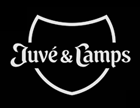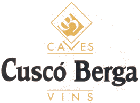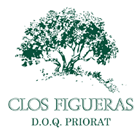Consejo Regulador del Cava
Cava Regulatory Board
by
Kathy Sullivan
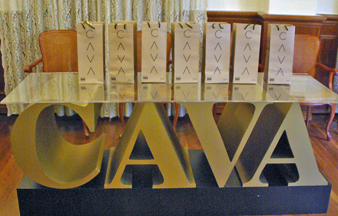 Summary: The Cava Regulatory Board is serious about promoting cavas as well as regulating the cava industry. While in Vilafranca del Penedès we attended a slide presentation by the Cava Regulatory Board.
Summary: The Cava Regulatory Board is serious about promoting cavas as well as regulating the cava industry. While in Vilafranca del Penedès we attended a slide presentation by the Cava Regulatory Board.
We quickly learned that the Cava Regulatory Board is the controlling agency for cava production and promotion. Cavas are distributed around the world to 148 countries.
According to the Cava Regulatory Board presentation, the most important thing about cava is the families that produce them. There is a strong sector of families. Usually each family has a winemaker. Cava equals the people.
History of Cava
In the mid-nineteenth century, winemakers learned how to control the secondary fermentation in the bottle. In 1872 the first cava was produced. At the time it was called champagne instead of cava.
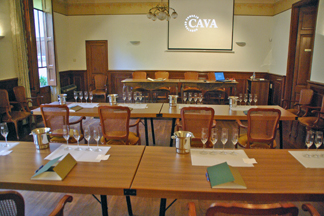 Between 1901 and 1950 these sparkling wines were produced in three ways: traditional method, Charmat and gas added.
Between 1901 and 1950 these sparkling wines were produced in three ways: traditional method, Charmat and gas added.
It was in 1959 that the term cava appeared. The Spanish definition for cava is “a place underground that has a constant temperature year round,” in other words a cave. By 1972 the Ministry of Agriculture began regulating the different winemaking techniques for sparkling wines.
In 1986, at about the same time Spain joined the European Union, the cava region was created. By 1991 the cava appellation was formed and regulated.
Today, according to the Cava Regulatory Board, only certain grape varieties are allowed for cava production. The white grapes include Macabeo, Xarel-lo, Parellada, Chardonnay, Subirat and Riojan Malvasia. The red grape varieties include Garnacha, Pinot Noir, Monastrell and Trepat.
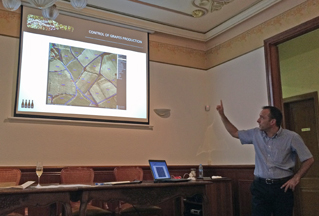 Cava Classification
Cava Classification
Cavas are classified from Brut Nature to sweet. The determination is based on the sugar content in grams per liter. It’s handy for consumers to be aware of the classification when purchasing cavas.
Brut Nature: 0-3 gr/l *no added sugar
Extra Brut: 0-6 gr/l
Brut: 1-12 gr/l
Extra Dry: 12-17 gr/l
Dry: 17-32 gr/l
Semi-Dry: 32-50 gr/l
Sweet: +50 gr/l
Another classification of cava is based on how many months the cava aged before it was bottled for sale. There are three levels:
Cava: aged for a minimum of nine months
Reserva: aged for a minimum of 15 months
Gran Reserva: aged for a minimum of 30 months.
Other requirements of the Cava Regulatory Council include:
Producers must register with the controlling agency
Limits the amount of cava produced
Regulates that up to 66% press can be used for cava
Cava is sampled by the board
Labeling regulations require the trademark and the word cava.
Prior to secondary fermentation regulations include
An alcohol level between 9.5% and 11.5%
Overall acidity greater than 5.5 g/l
Real volatile acidity less than 0.6 g/l
Overall sulphur dioxide is greater than 140 mg/l
pH between 2.8 and 3.3
The final alcohol level should be between 10.8% and 12.8%.
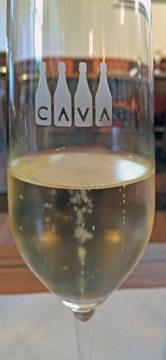 Cava Tasting
Cava Tasting
While learning about cavas we tasted four cavas.The first cava was a Brut Young Cava. The cava was produced with Macabeo, Xarel-lo and Parellada. The yellow cava with 11.5% alcohol offered notes of apple and citrus. The cava bubbles were very persistent and lasted for over a half hour in the glass.
Brut Reserva Cava was a blend of Macabeo, Xarel-lo and Parellada. The yellow wine with 11.5% alcohol offered notes of apple, citrus and mineral. The cava was very crisp.
The third cava we tasted was a Brut Nature Gran Reserva Cava. This cava was produced with Macabeo and Parellada grape varieties. The yellow cava was 12% alcohol. The cava offered many strong apple notes.
The last cava we tasted was Brut Rosé Cava. This crisp cava was produced with Trepat, Monastrell and Garnacha varieties. The salmon color cava had 11.5% alcohol. The cava offered notes of red raspberries and cherries.
The Cava Regulatory Council has an important role in assuring people of the origin of cavas and the quality of the cavas produced.
Consejo Regulador del Cava
Cava Regulatory Board
Av. Tarragona, 24
08720 Vilafranca del Penedès
Article written November 2014
Please support the following.
 |
|||
 |
 |
